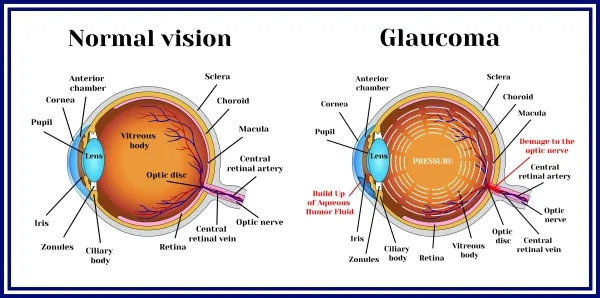Ophthalmology and Optometry Coding Alert
You'll Find New Myopia, Blindness Codes on Oct. 1
CMS has released the finalized list of 2018 diagnosis codes. Eye care coders hoping for scores of new ICD-10 codes starting this fall are in luck, with over 300 new diagnosis codes debuting on Oct. 1. CMS published the full listing of codes on June 13, but we’ve reviewed the list to identify the changes most relevant to ophthalmology and optometry practices. Degenerative Myopia Coding Is Now Clearer The latest version of ICD-10 will offer dozens of new codes in the degenerative myopia (H44.2) category, now requiring you to have very specific information about the type of myopia. For example, you’ll find the following new subcategories under H44.2: As with many of the codes in the “Disease of the eye and adnexa” section of ICD-10, the above codes will require a sixth character to denote whether the right eye (sixth character 1), left eye (sixth character 2), bilateral eye (sixth character 3), or unspecified eye (sixth character 9) was affected. For instance, to report degenerative myopia with foveoschisis of the left eye, you’ll report H44.2D2. These changes could help coders quite a bit, says Gina Vanderwall, OCS, CPC, CPPM, financial counselor with Finger Lakes Ophthalmology in Canandaigua, New York. “When a patient has degenerative myopia, they often present with, or are at risk of developing, certain conditions related to that process,” Vanderwall says. “Most eye care physicians typically specify any related conditions in their documentation and coders had to historically choose the diagnoses separately. Placing these conditions together into a bundled diagnosis will, in my opinion, streamline the coding process.” As with many previous eye care diagnosis updates, she says, laterality is key in both documentation and coding. “We are finding this more and more often as ICD-10 makes changes.” In some cases, incorporating the diagnosis updates could pose challenges if the eye care practitioners in your practice aren’t thorough documenters, but there are ways to fix that. “If a coder finds that their providers typically omit certain diagnoses related to their patient’s degenerative myopia, a friendly reminder to the providers that there are newly issued codes, requiring accurate documentation, would benefit both the providers and their coder,” Vanderwall says. “My advice is to follow the guidelines within your practice for educating your providers regarding changes and the impact those changes will have on them.” ICD-10 Will Include Codes for Bilateral Blindness of Different Categories Eye care coders will be pleased to see that the ICD-10 committee has included new codes in the 2018 edition that apply when a patient has blindness and/or low vision in both eyes, allowing you to denote whether the left eye blindness is of a different category than the blindness in the right eye. To select the right code in this category, you’ll find the right eye’s category first and then choose the subcode based on the left eye’s category. For example, if the patient has category 3 blindness of the right eye, you’ll start with new category H54.0X3, then you’ll look at the medical record to determine the left eye’s category, which will offer the following options: You’ll see similar options that direct your coding based on whether the patient has category 4 blindness in the right eye (H54.0X4-) or category 5 blindness in the right eye (H54.0X5-) as well. Likewise, the ICD-10 manual will now allow you to report blindness in one eye with low vision in the other, with categories such as H54.11 (Blindness, right eye, low vision left eye) and H54.12 (Blindness, left eye, low vision right eye), among others. Each of these new categories will include subcodes allowing you to report the category of blindness as well as the category of low vision. For example, following is one of the new subcategory listings in this part of ICD-10: o H54.1141 — Blindness right eye category 4, low vision left eye category 1 The ICD-10 manual also includes new categories and dozens of codes to describe blindness or low vision that’s isolated to one eye, such as the following new codes, among others: Documentation will be critical to selecting the correct codes in these new categories, Vanderwall says. “This will have a large impact on providers, as each eye’s blindness or low vision category will need to be accurately documented in order for coders to succeed. Unless blindness and/or low vision is your provider’s specialty, I believe this change will be a challenge for all involved, until the changes become familiar and the documentation requirements become second-nature to all involved. This one may take some time to become a smooth documentation/coding process. Familiarize yourself and your providers with the options within this section,” she adds. Know Which Proposals Weren’t Adopted Although several of the ICD-10 additions that stakeholders originally recommended were adopted, some were not. For example, you won’t find expanded blepharitis codes among the new listings, nor will you see new eyelid cancer, thyroid eye disease, or conjunctivitis codes, which the American Academy of Ophthalmology had requested. Resource: To read the complete list of ICD-10-CM changes, visit https://www.cms.gov/Medicare/Coding/ICD10/2018-ICD-10-CM-and-GEMs.html.
o H54.1142 — Blindness right eye category 4, low vision left eye category 2
Related Articles
Ophthalmology and Optometry Coding Alert
- ICD-10-CM:
You'll Find New Myopia, Blindness Codes on Oct. 1
CMS has released the finalized list of 2018 diagnosis codes. Eye care coders hoping for [...] - Breaking:
For These Eye Procedures, Report 99024 for Postop Visits
Certain states now require this new procedure. If you’re used to including post-operative visits in [...] - Modifiers:
Modifier 25 Misuse Leads to Six-Figure Settlement for This Ophthalmologist
At issue: Whether to report intravitreal injections with E/M services. Some eye care practices are [...] - Billing:
Collect More Reimbursement by Correcting This Big Issue
Following up on your claims is just as important as submitting them. As ophthalmologists face [...] - You Be the Coder:
Know How to Bill E/M Visits When the Patient Isn't Present
Question: We had a patient’s son present to talk about his mother’s glaucoma, the implications if [...] - Reader Question:
Know the New Taxonomy Subspecialty Codes
Question: When can we start using the new retina and glaucoma taxonomy specialty designations? Codify Subscriber [...] - Reader Question:
PLI Is Typically An Out-of-Pocket Expense
Question: We have a patient getting cataract surgery who will require a premium lens implant. How [...]




